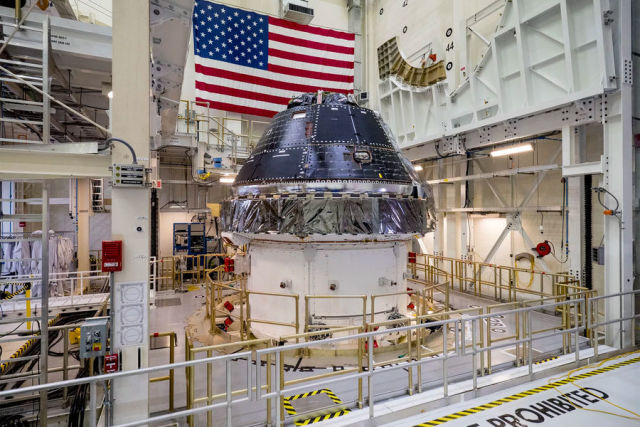NASA said they will not have time to land on the moon until 2026
The Inspector General of NASA criticized the American lunar program. Speaking to US lawmakers, he said that the Artemis program required several billion dollars more than planned, and people will not be on the surface of the Moon until 2026.
The Artemis program was started by US President Donald Trump. He set NASA the task of sending the first woman and the first man to the moon in the XXI century by 2024. According to the plans, the astronauts were supposed to fly on the Orion spacecraft on the SLS rocket, which is still in development. Since then, the landing date has been moved to 2025, and the program management reported on the unavailability of many key components like spacesuits.
Now Paul Martin, NASA's Inspector General, has delivered a report to the Science Committee of the U.S. House of Representatives. Usually, the Inspector General performs audit and control functions and does not make statements, but this time, he gave an overall assessment of the agency's work.
"Taking into account the time required to develop and test landing systems, as well as next-generation spacesuits, we believe that the first manned flight will take place at the beginning of 2026," Martin said. The delay was also affected by a seven-month legal dispute between Blue Origin and SpaceX for the right to develop the lander. The lawsuit was initiated by Jeff Bezos' company, but lost the case.
But the main problem of the program was the price. "We found out that the first four Artemis launches will cost $4.1 billion each, and such a price tag is unacceptable," Martin said. This amount includes only the rocket itself, the ship and the ground support for the launch.
These costs are distributed as follows: a billion dollars for the Orion spacecraft, $300 million to the European Space Agency for the Orion service module, $568 million for the ground infrastructure and $2.2 billion for the rocket itself. This does not include NASA's costs for the development of Orion and SLS, which went from 2005 and 2011, respectively. If you include depreciation of the development in the price tag, it will grow at least twice.
These figures significantly exceed NASA's expectations. In 2017, one of the agency's senior officials told Ars Technica that they planned to keep the cost of one launch within $2 billion, and later hoped to reduce it to one and a half. In total, the cost of Artemis from 2012 to 2025 will reach $ 93 billion.
Martin did not keep silent about the reasons for such spending.
"Lower-level performers like Boeing are partly responsible for this," he said. - Among other things, there were problems during the development of SLS and Orion. Despite the fact that their development is really difficult, Boeing has performed its task poorly, demonstrating poor planning and poor execution of this plan."
Martin's method of allocating funding from NASA deserved special criticism. The agency practices the "cost + profit" (cost-plus) payment scheme, which means that the contractor will cover all expenses, and the company will remain profitable in any case. According to the auditor, as a result, companies have no motivation to reduce costs and deadlines.
It is worth noting that NASA has repeatedly tried to get away from the practice of cost-plus and move to a more market-based payment, but each time it faced criticism from congressmen. This criticism has not abated even after NASA's commercial programs have borne fruit: for example, in the form of SpaceX. In particular, at the same meeting, Eddie Johnson, a member of the committee, again supported the development of spacecraft by NASA, as in the case of SLS and Orion, and urged not to increase purchases of ready-made solutions by private owners. In particular, according to Johnson, the privatization of space will lead to the inability to reach the Moon and Mars. At the same time, many independent experts insist that the main reason for the hostility of legislators to private space is lobbying.
Vasily Zaitsev

